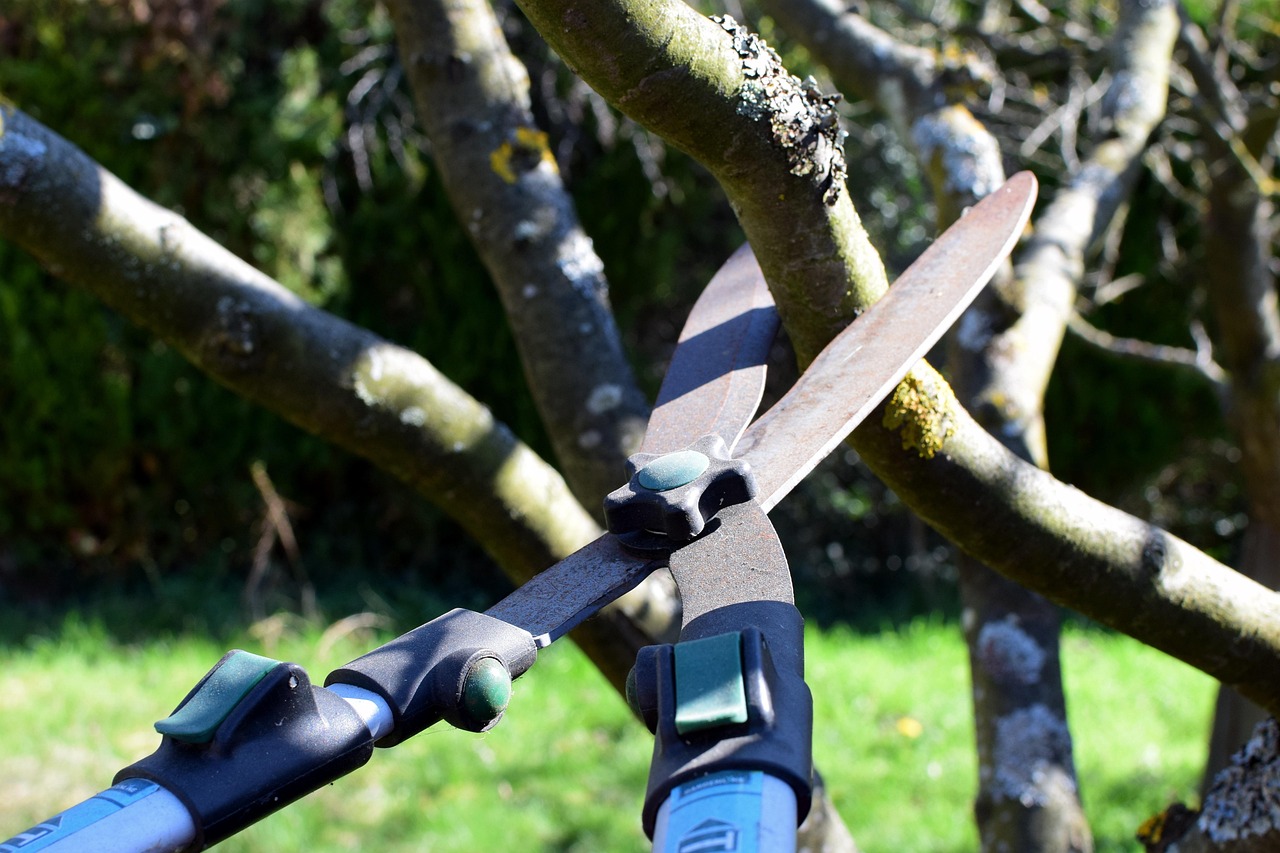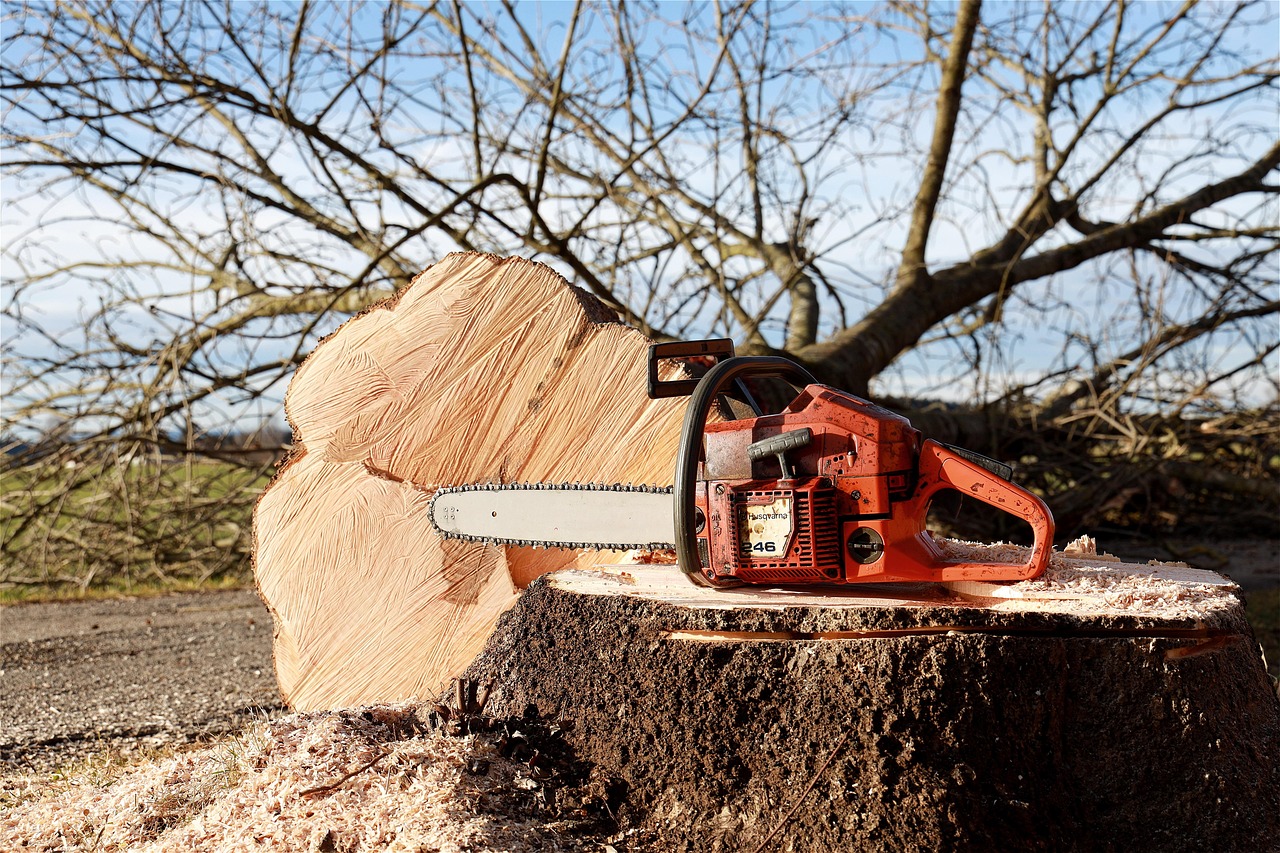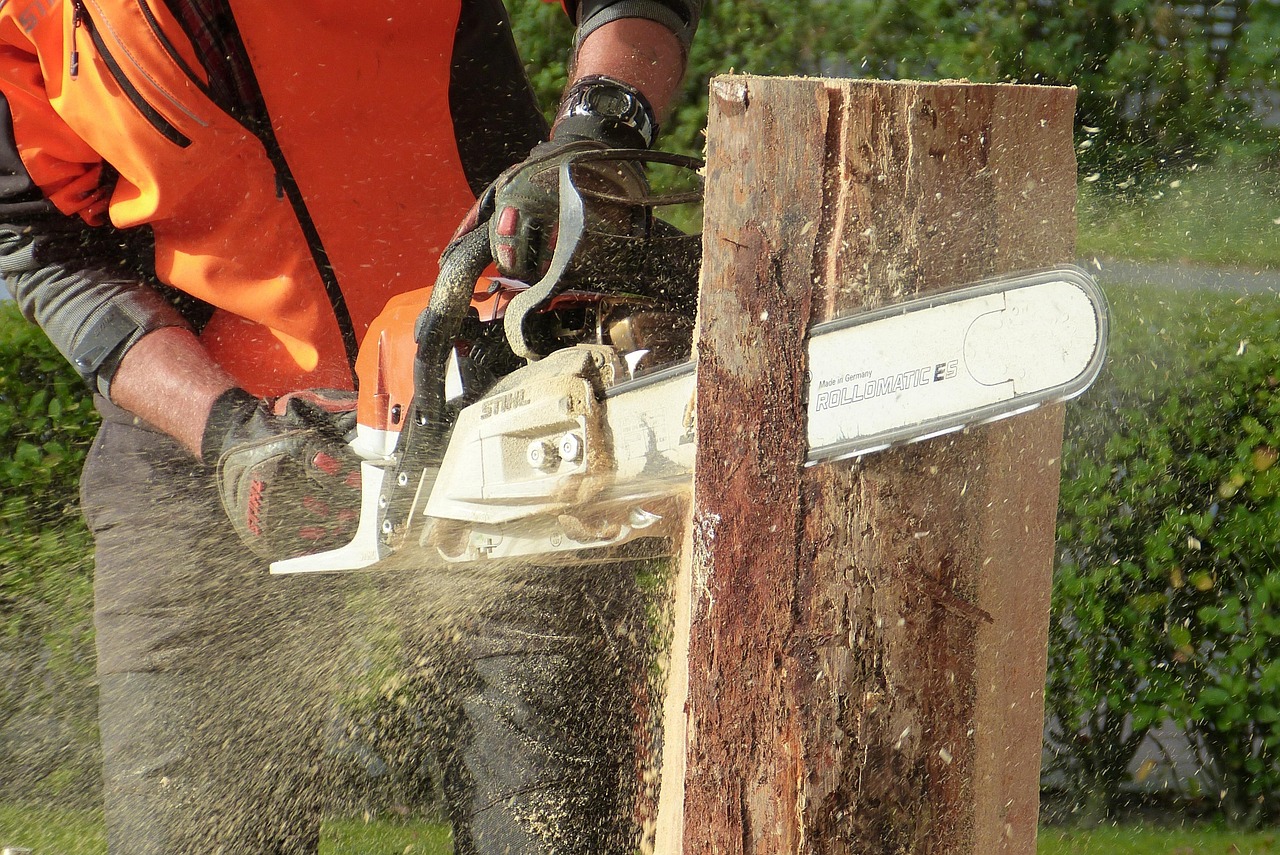Tree pruning is essential for reducing storm damage risks. Properly maintained trees are less likely to suffer from breakage and falling branches during severe weather. Regular pruning enhances tree structure, removes weak or dead limbs, and promotes healthy growth, all contributing to increased resilience against storms.
Severe storms can cause significant damage to trees, leading to property destruction and safety hazards. High winds and heavy rains can weaken branches and uproot trees, especially those that are unhealthy or poorly maintained. As a homeowner or property manager, understanding how to effectively prune trees can significantly minimize these risks.

Tree pruning involves removing specific parts of a tree, such as branches, buds, or roots. This practice not only improves the tree’s health but also enhances its structural integrity. When done correctly, pruning can prepare trees for extreme weather conditions. The following sections will delve into the importance of pruning, the best techniques to use, and the optimal times to prune.
The Importance of Pruning for Storm Resilience
Pruning trees plays a crucial role in their overall health and stability. By removing dead or diseased branches, you reduce the risk of these limbs breaking off during a storm. Additionally, pruning helps maintain a strong central leader in trees, which is vital for supporting the weight of the canopy.
Healthy trees are more resistant to wind damage. When trees have strong structures, they are less likely to topple or break apart compared to those with weak limbs. Regular pruning allows for better airflow through the canopy, reducing the likelihood of wind resistance that can lead to damage.

Here are some key benefits of tree pruning in relation to storm damage prevention:
- Improves overall tree health and vigor.
- Reduces the risk of falling branches.
- Enhances structural integrity.
- Encourages new growth and stronger limbs.
- Minimizes potential hazards around buildings and power lines.
Key Techniques for Effective Pruning
To maximize the benefits of pruning, it is essential to use the right techniques. Here are some approaches that can help ensure your trees remain strong and resilient:
Crown Thinning
Crown thinning involves selectively removing branches throughout the crown of the tree. This technique improves light penetration and air circulation while reducing wind resistance. It is particularly beneficial for large trees that have dense foliage.

Crown Raising
Crown raising is the process of removing lower branches of the tree. This technique helps create clearance for pedestrians and vehicles while also reducing the potential for branches to interfere with structures during storms.
Crown Reduction
Crown reduction reduces the overall size of the tree’s canopy. This technique is effective for tall trees that may pose a risk of falling during storms. Reducing the height and spread of the tree helps balance its weight and lowers the risk of branch failure.
When to Prune Trees
The timing of tree pruning is crucial for achieving optimal results. Generally, late winter or early spring is considered the best time to prune most trees. During this period, trees are still in dormancy, which allows them to recover more effectively from pruning stress.

However, there are exceptions based on the type of tree:
| Tree Type | Best Time to Prune |
|---|---|
| Deciduous Trees | Late Winter/Early Spring |
| Evergreen Trees | Late Spring/Early Summer |
| Flowering Trees | After Blooming |
Pruning at the right time allows trees to heal quickly and encourages healthy growth patterns. Avoid pruning during the fall or summer heat, as this can stress the tree and encourage disease.
By understanding the importance of tree pruning and employing effective techniques at the appropriate times, property owners can significantly reduce storm damage risks. Regular maintenance not only protects your property but also supports healthy ecosystems in your area.
Tools and Equipment for Pruning
Using the right tools is essential for effective tree pruning. Proper equipment not only makes the task easier but also ensures cleaner cuts, which helps trees heal faster. Below are some commonly used tools for pruning trees:
- Hand Pruners: Ideal for small branches and young trees. They provide a clean cut and are easy to maneuver.
- Loppers: Suitable for thicker branches that are too large for hand pruners. They have long handles to provide leverage.
- Pruning Saws: Used for larger branches. These saws are designed for efficient cutting and can handle various tree sizes.
- Chain Saws: Effective for large tree trimming tasks. Safety precautions are necessary when using this tool.
- Safety Gear: Includes gloves, goggles, and hard hats. Protecting yourself is crucial during any pruning job.
Before starting any pruning task, ensure that your tools are clean and sharp. Dull tools can damage the tree and make it more susceptible to diseases. Regular maintenance of your tools will enhance their performance and lifespan.
Safety Considerations During Pruning
Pruning trees can be risky, especially when working at heights or with large branches. Following safety precautions will help prevent injuries. Here are some important safety guidelines to consider:
- Assess the Area: Before you start, inspect the area around the tree. Look for power lines, nearby structures, and other hazards.
- Use Proper Ladders: If you need to reach higher branches, use a sturdy ladder. Ensure it is stable before climbing.
- Wear Protective Clothing: Use gloves, goggles, and hard hats to protect yourself from falling debris.
- Work with a Partner: It is safer to prune with someone else. They can assist you and help in case of an emergency.
- Know Your Limits: If a job seems too risky or complicated, consider hiring a professional arborist.
Common Mistakes in Tree Pruning
Even experienced individuals can make mistakes while pruning trees. Understanding common errors can help you avoid them. Here are some frequent pruning mistakes:
- Over-Pruning: Removing too many branches can stress the tree and hinder its growth. Always prioritize healthy branches.
- Improper Cuts: Making cuts incorrectly can leave wounds that invite pests and diseases. Use clean, angled cuts to promote quick healing.
- Ignoring Tree Type: Different trees have distinct pruning needs. Not considering these differences can lead to poor results.
- Pruning at the Wrong Time: As previously mentioned, timing is critical. Pruning at the wrong season can harm the tree.
- Neglecting Tree Health: Failing to assess the overall health of a tree before pruning can lead to removing branches that are crucial for its survival.
The Role of Pruning in Tree Health
Pruning is not just about minimizing storm damage; it also plays a significant role in maintaining overall tree health. Healthy trees are better equipped to withstand environmental stresses. Here are several ways pruning contributes to tree health:
Encouraging New Growth
Regular pruning stimulates new growth by allowing sunlight to penetrate deeper into the canopy. This promotes a healthier tree structure and encourages flowering or fruiting in certain species.
Disease Prevention
By removing dead or diseased branches, you reduce the chances of infection spreading throughout the tree. Keeping trees clean helps them resist pests and diseases more effectively.
Improving Air Circulation
A well-pruned tree allows for better air circulation among its branches. Improved airflow reduces humidity levels within the canopy, making it less favorable for fungal growth and diseases.
Maintaining Structural Integrity
A healthy tree has a robust structure that can withstand wind and storm damage. Pruning helps maintain this integrity by promoting a strong central trunk and balanced branch distribution.
Seeking Professional Help
While many homeowners can manage basic pruning tasks, there are instances when hiring a professional arborist is advisable. Professionals have the expertise, experience, and equipment needed for more complex jobs. Here are some scenarios where seeking help is beneficial:
- If the tree is large or poses risks while pruning.
- If you are unsure about the specific needs of your tree type.
- If major structural issues exist, such as split trunks or extensive damage from storms.
- If you lack the necessary tools or safety equipment.
In conclusion, understanding the tools, techniques, safety measures, and overall importance of pruning is vital for maintaining healthy trees that can withstand storms. Regular maintenance not only protects your property but also enhances the natural beauty of your landscape.
Understanding Tree Anatomy
To effectively prune trees and minimize storm damage, it is essential to understand tree anatomy. Knowing the different parts of a tree helps in making informed pruning decisions that promote health and stability. Here are the key components of a tree:
- Roots: The underground part anchors the tree and absorbs water and nutrients from the soil.
- Trunk: The central stem supports the tree and acts as a conduit for nutrients and water between the roots and leaves.
- Branches: These extend from the trunk, supporting leaves and flowers. They are critical for the tree’s structure.
- Leaves: The primary site for photosynthesis, leaves convert sunlight into energy for the tree.
- Bark: The outer protective layer that shields the tree from pests, diseases, and environmental damage.
Understanding these components allows you to assess which areas require pruning and how to approach each cut to promote recovery and health.
Seasonal Considerations for Pruning
The seasons can greatly influence the health and growth patterns of trees. Different types of trees respond to pruning at various times throughout the year. Understanding these seasonal differences is crucial for effective tree management.
Spring Pruning
Spring is often a busy time for tree growth. Pruning in early spring can help shape trees before the growing season begins. However, this timing is ideal primarily for:
- Deciduous trees that are dormant.
- Removing winter damage from branches.
Summer Pruning
Summer pruning can be beneficial for specific purposes, such as:
- Thinning out dense canopies to improve airflow.
- Controlling the size of fast-growing species.
This season is not recommended for severe pruning as it can stress the tree during its active growth phase.
Fall Pruning
Pruning in fall is generally discouraged, particularly for certain species. The reasons include:
- Trees are preparing for dormancy, and wounds may not heal properly, leaving them vulnerable to diseases.
- Pests may be more active as winter approaches, increasing the risk of infestations.
Winter Pruning
Winter is often considered one of the best times for pruning many types of trees. During dormancy, trees are less susceptible to stress. Benefits include:
- Better visibility of the tree structure without leaves.
- Reduced risk of disease transmission.
Disease and Pest Management in Pruning
One of the key aspects of tree health involves managing diseases and pests. Pruning can help mitigate these risks if done correctly. Here are several considerations regarding pest and disease management during pruning:
Identifying Common Tree Diseases
Familiarizing yourself with common tree diseases can help you make informed pruning decisions. Some prevalent diseases include:
- Canker Diseases: These affect bark and can lead to branch dieback.
- Root Rot: Often caused by overwatering or poor drainage, leading to weakened trees.
- Powdery Mildew: A fungal disease that affects leaves, causing white spots and reducing photosynthesis.
Pest Identification
Pests can cause significant harm to trees. Knowing how to identify them allows for timely intervention. Common pests include:
- Aphids: Small insects that suck sap from leaves and can cause leaf curling and yellowing.
- Spider Mites: Tiny arachnids that create webs and cause stippling on leaves.
- Emerald Ash Borer: A beetle that targets ash trees, leading to rapid decline and death.
Pruning Techniques for Disease Control
When pruning diseased branches, follow these guidelines to prevent further spread:
- Always sterilize your tools before and after use to prevent transferring pathogens between trees.
- Make clean cuts to reduce stress on the tree and promote quicker healing.
- Avoid leaving large wounds; trim branches close to the trunk without damaging the collar tissue.
The Impact of Environmental Factors
The environment plays a significant role in tree growth and health. Factors such as soil quality, moisture levels, and sunlight exposure directly influence how trees respond to pruning. Here are some environmental factors to consider:
Soil Quality
The quality of soil affects root development, which in turn influences overall tree health. Poor soil conditions can lead to nutrient deficiencies. Before pruning, analyze soil conditions to ensure they support healthy growth.
Moisture Levels
Trees require adequate moisture levels for optimal health. Be cautious about pruning during drought conditions, as stressed trees may not respond well to cutting back branches.
Sunlight Exposure
Sufficient sunlight is essential for photosynthesis. When pruning, ensure that lower branches do not block sunlight from reaching the inner canopy or surrounding plants.
Understanding these environmental factors will help you make informed decisions regarding pruning strategies that support healthy tree growth while minimizing storm damage risks.
Long-Term Maintenance and Care
Once you’ve pruned your trees effectively, it’s crucial to maintain ongoing care to ensure their health and resilience against storms. Long-term maintenance involves regular inspections, additional pruning, and proper care practices. Here are some strategies to implement:
Regular Inspections
Conducting regular inspections allows you to monitor the health of your trees. Look for signs of disease, pest infestations, and structural weaknesses. Inspections should occur at least twice a year, ideally in spring and fall. During these inspections, check for:
- Dead or dying branches that may need immediate attention.
- Signs of pests, such as holes or unusual markings on the bark.
- Fungal growth or discoloration that may indicate disease.
Follow-Up Pruning
Follow-up pruning may be necessary as trees continue to grow. This includes:
- Removing any new dead or diseased branches.
- Thinning out dense areas to promote air circulation.
- Adjusting the shape of the tree to maintain its structural integrity.
It is essential to approach follow-up pruning with the same care and technique as initial pruning to avoid causing stress or damage.
Watering and Fertilization
Proper watering and fertilization practices can significantly enhance tree health. Consider the following:
- Watering: Newly pruned trees may require additional watering to support recovery. Ensure consistent moisture without overwatering, which can lead to root rot.
- Fertilization: Based on soil tests, consider applying fertilizers that provide essential nutrients, especially if the soil quality is poor.
Pest and Disease Management
Ongoing management of pests and diseases is crucial for tree health. Here are some methods to consider:
- Use organic or chemical treatments as necessary, following guidelines for application to minimize harm to beneficial insects.
- Encourage beneficial insects, such as ladybugs and lacewings, which help control pest populations naturally.
- Implement proper sanitation by removing fallen leaves and debris that may harbor pests or diseases.
Community Involvement and Education
Engaging with your community can further enhance tree care efforts. Participating in local workshops or tree care programs can provide valuable knowledge and skills. Consider the following:
- Community Workshops: Many municipalities offer workshops on tree care, including pruning techniques and pest management strategies.
- Volunteer Programs: Join local tree-planting or maintenance initiatives to gain hands-on experience while contributing to community green spaces.
- Educational Resources: Utilize online resources, such as extension services or arboricultural societies, for information on best practices for tree care.
Final Thoughts
Tree pruning is a vital practice for minimizing storm damage risks while promoting overall tree health. Understanding proper techniques, seasonal considerations, and the anatomy of trees empowers homeowners and property managers to make informed decisions. Regular inspections, long-term maintenance, and community involvement further enhance the resilience of trees against environmental stresses.
By implementing a comprehensive approach to tree care, individuals can not only protect their property but also contribute positively to the local ecosystem. Healthy trees provide numerous benefits, including improved air quality, increased property value, and enhanced beauty in our surroundings. Taking proactive steps today will yield healthier trees that can withstand storms and thrive for generations to come.
In conclusion, effective tree pruning combined with ongoing maintenance is essential for fostering strong, resilient trees that can endure the challenges posed by severe weather. As we continue to learn more about the importance of trees in our environment, let us prioritize their care to ensure a sustainable future for our urban landscapes.
